Immune landscape of distinct subtypes in urothelial carcinoma based on immune gene profile
- PMID: 36003383
- PMCID: PMC9394485
- DOI: 10.3389/fimmu.2022.970885
Immune landscape of distinct subtypes in urothelial carcinoma based on immune gene profile
Abstract
Immune checkpoint blockade (ICB) has become a promising therapy for multiple cancers. However, only a small proportion of patients display a limited antitumor response. The present study aimed to classify distinct immune subtypes and investigate the tumor microenvironment (TME) of urothelial carcinoma, which may help to understand treatment failure and improve the immunotherapy response. RNA-seq data and clinical parameters were obtained from TCGA-BLCA, E-MTAB-4321, and IMVigor210 datasets. A consensus cluster method was used to distinguish different immune subtypes of patients. Infiltrating immune cells, TME signatures, immune checkpoints, and immunogenic cell death modulators were evaluated in distinct immune subtypes. Dimension reduction analysis was performed to visualize the immune status of urothelial carcinoma based on graph learning. Weighted gene co-expression network analysis (WGCNA) was performed to obtain hub genes to predict responses after immunotherapy. Patients with urothelial carcinoma were classified into four distinct immune subtypes (C1, C2, C3 and C4) with various types of molecular expression, immune cell infiltration, and clinical characteristics. Patients with the C3 immune subtype displayed abundant immune cell infiltrations in the tumor microenvironment and were typically identified as "hot" tumor phenotypes, whereas those with the C4 immune subtype with few immune cell infiltrations were identified as "cold" tumor phenotypes. The immune-related and metastasis-related signaling pathways were enriched in the C3 subtype compared to the C4 subtype. In addition, tumor mutation burden, inhibitory immune checkpoints, and immunogenic cell death modulators were highly expressed in the C3 subtype. Furthermore, patients with the C4 subtype had a better probability of overall survival than patients with the C3 subtype in TCGA-BLCA and E-MTAB-4321 cohorts. Patients with the C1 subtype had the best prognosis when undergoing anti-PD-L1 antibody treatment. Finally, the immune landscape of urothelial carcinoma showed the immune status in each patient, and TGFB3 was identified as a potential biomarker for the prediction of immunotherapy resistance after anti-PD-L1 monoclonal antibody treatment. The present study provided a bioinformatics basis for understanding the immune landscape of the tumor microenvironment of urothelial carcinoma.
Keywords: biomarker; immune subtypes; immunotherapy; tumor microenvironment; urothelial carcinoma.
Copyright © 2022 Peng.
Conflict of interest statement
The author declared that the research was conducted in the absence of any commercial or financial relationships that could be construed as a potential conflict of interest
Figures
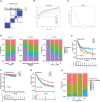


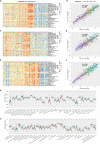
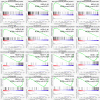
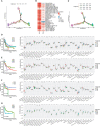

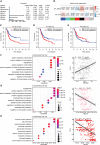
Similar articles
-
Identification of fatty acid metabolism-related molecular subtype biomarkers and their correlation with immune checkpoints in cutaneous melanoma.Front Immunol. 2022 Nov 18;13:967277. doi: 10.3389/fimmu.2022.967277. eCollection 2022. Front Immunol. 2022. PMID: 36466837 Free PMC article.
-
Characterization of stem cell landscape and identification of stemness-relevant prognostic gene signature to aid immunotherapy in colorectal cancer.Stem Cell Res Ther. 2022 Jun 9;13(1):244. doi: 10.1186/s13287-022-02913-0. Stem Cell Res Ther. 2022. PMID: 35681225 Free PMC article.
-
Development and validation of a model based on immunogenic cell death related genes to predict the prognosis and immune response to bladder urothelial carcinoma.Front Oncol. 2023 Nov 10;13:1291720. doi: 10.3389/fonc.2023.1291720. eCollection 2023. Front Oncol. 2023. PMID: 38023241 Free PMC article.
-
Cancer-associated Fibroblasts in Bladder Cancer: Origin, Biology, and Therapeutic Opportunities.Eur Urol Oncol. 2023 Aug;6(4):366-375. doi: 10.1016/j.euo.2023.02.011. Epub 2023 Mar 6. Eur Urol Oncol. 2023. PMID: 36890105 Review.
-
Emerging role of immunotherapy in urothelial carcinoma-Future directions and novel therapies.Urol Oncol. 2016 Dec;34(12):566-576. doi: 10.1016/j.urolonc.2016.09.002. Epub 2016 Oct 20. Urol Oncol. 2016. PMID: 27773553 Review.
Cited by
-
Matched analysis of detailed peripheral blood and tumor immune microenvironment profiles in bladder cancer.Epigenomics. 2024 Jan;16(1):41-56. doi: 10.2217/epi-2023-0358. Epub 2024 Jan 15. Epigenomics. 2024. PMID: 38221889 Free PMC article.
-
The combination of immune checkpoint inhibitors and antibody-drug conjugates in the treatment of urogenital tumors: a review insights from phase 2 and 3 studies.Cell Death Dis. 2024 Jun 19;15(6):433. doi: 10.1038/s41419-024-06837-w. Cell Death Dis. 2024. PMID: 38898003 Free PMC article. Review.
-
TFRC, associated with hypoxia and immune, is a prognostic factor and potential therapeutic target for bladder cancer.Eur J Med Res. 2024 Feb 9;29(1):112. doi: 10.1186/s40001-024-01688-9. Eur J Med Res. 2024. PMID: 38336764 Free PMC article.
-
Targeting the PD-1/PD-L1 Signaling Pathway for Cancer Therapy: Focus on Biomarkers.Int J Mol Sci. 2025 Jan 31;26(3):1235. doi: 10.3390/ijms26031235. Int J Mol Sci. 2025. PMID: 39941003 Free PMC article. Review.
-
Advancements in bladder cancer treatment: The synergy of radiation and immunotherapy.Oncotarget. 2025 May 19;16:337-346. doi: 10.18632/oncotarget.28723. Oncotarget. 2025. PMID: 40387780 Free PMC article. Review.
References
-
- Pfister C, Gravis G, Flechon A, Soulie M, Guy L, Laguerre B, et al. . Randomized phase III trial of dose-dense methotrexate, vinblastine, doxorubicin, and cisplatin, or gemcitabine and cisplatin as perioperative chemotherapy for patients with muscle-invasive bladder cancer. analysis of the GETUG/AFU V05 VESPER trial secondary endpoints: Chemotherapy toxicity and pathological responses. Eur Urol (2021) 79(2):214–21. doi: 10.1016/j.eururo.2020.08.024 - DOI - PubMed
-
- Suzman DL, Agrawal S, Ning YM, Maher VE, Fernandes LL, Karuri S, et al. . FDA Approval summary: Atezolizumab or pembrolizumab for the treatment of patients with advanced urothelial carcinoma ineligible for cisplatin-containing chemotherapy. Oncologist (2019) 24(4):563–9. doi: 10.1634/theoncologist.2018-0084 - DOI - PMC - PubMed
-
- Zhang T, Harrison MR, O'Donnell PH, Alva AS, Hahn NM, Appleman LJ, et al. . A randomized phase 2 trial of pembrolizumab versus pembrolizumab and acalabrutinib in patients with platinum-resistant metastatic urothelial cancer. Cancer (2020) 126(20):4485–97. doi: 10.1002/cncr.33067 - DOI - PMC - PubMed
-
- Eckstein M, Strissel P, Strick R, Weyerer V, Wirtz R, Pfannstiel C, et al. . Cytotoxic T-cell-related gene expression signature predicts improved survival in muscle-invasive urothelial bladder cancer patients after radical cystectomy and adjuvant chemotherapy. J Immunother Cancer (2020) 8(1). doi: 10.1136/jitc-2019-000162 - DOI - PMC - PubMed
Publication types
MeSH terms
Substances
LinkOut - more resources
Full Text Sources
Medical
Research Materials
Miscellaneous

